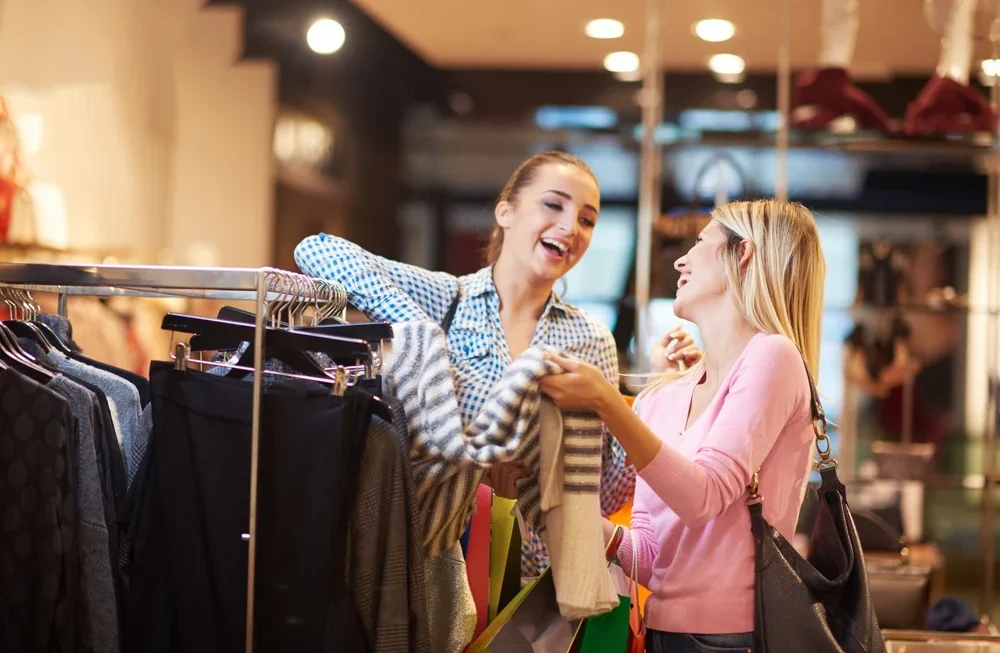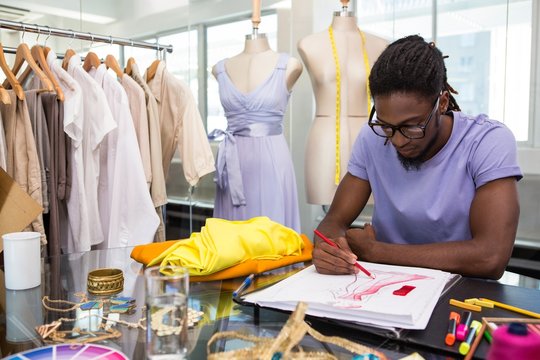The world of fashion is ever-evolving, with trends constantly shifting, influenced by societal changes, cultural movements, and technological advancements. As we move into the mid-2020s, we are witnessing the rise of several trends that are redefining what it means to be stylish, pushing boundaries in terms of sustainability, inclusivity, and creativity. The latest fashion trends are a reflection of the changing times, as people seek to express themselves through their clothing while also addressing environmental and social concerns.
In this article, we’ll explore the top fashion trends shaping the industry today, and how they reflect the changing dynamics of style, culture, and society.
1. Sustainable Fashion
One of the most significant trends in the fashion industry today is the shift towards sustainability. With growing awareness about the environmental impact of fast fashion, both designers and consumers are becoming more conscious about the materials and processes used in garment production.
Brands are increasingly adopting sustainable practices, such as using eco-friendly fabrics, reducing waste, and focusing on ethical manufacturing. Recycled materials like ocean plastic, organic cotton, and hemp are becoming more common in clothing collections. Additionally, many companies are embracing slow fashion, emphasizing quality over quantity, and creating pieces that are designed to last longer, rather than producing cheap, disposable items.
Sustainability is not only about the materials used but also the entire lifecycle of a garment, from production to consumption and disposal. Many designers are exploring ways to design garments that are both beautiful and environmentally responsible, further pushing the industry to reduce its carbon footprint.
2. Gender Fluidity and Inclusivity
The conversation around gender fluidity and inclusivity in fashion has gained significant momentum in recent years. Traditional gender norms in clothing are being challenged, as more designers create collections that are not confined by the boundaries of “menswear” and “womenswear.”
Gender-neutral clothing lines have gained popularity, offering versatile pieces that can be worn by anyone, regardless of their gender identity. This trend reflects a broader cultural shift toward acceptance and self-expression, where people are free to dress in ways that reflect their true selves. As a result, many fashion brands are now featuring a broader range of models, including those of different genders, sizes, and ethnicities, making the fashion industry more inclusive than ever before.
The rise of gender-fluid fashion has also led to an increased demand for unisex and oversized clothing, creating a space where individuals can experiment with their style and break free from societal expectations.
3. Tech-Infused Fashion (Wearable Technology)
Technology and fashion are coming together like never before, creating a new category of clothing that combines both style and functionality. Wearable technology has become a growing trend, with innovations such as smartwatches, fitness trackers, and even smart clothing gaining attention in the fashion world.
The integration of technology into clothing allows designers to create garments that can perform various functions. For example, clothes with embedded LED lights, temperature-regulating fabrics, and even garments that can charge your devices are becoming more mainstream. These advances not only make clothing more functional but also add an element of innovation to everyday wear. Fashion is now about convenience and performance, and consumers are looking for garments that can support their busy lifestyles while maintaining style.
Some designers are also experimenting with augmented reality (AR) and virtual reality (VR) to create immersive fashion experiences. For instance, virtual fashion shows and digital clothing collections have become increasingly popular, providing a new way for brands to connect with consumers and showcase their designs.
4. Athleisure and Comfort Wear
In recent years, athleisure has solidified itself as one of the dominant trends in fashion. Athleisure refers to clothing that is designed for both athletic and leisure activities, combining comfort, style, and functionality. Think leggings, yoga pants, sports bras, and oversized hoodies—all items that can seamlessly transition from the gym to a casual day out.
Comfort is now a priority in fashion, as more people are opting for clothing that allows them to feel relaxed and at ease, without compromising on style. The rise of remote work and flexible work environments has also contributed to the popularity of athleisure, as people seek comfortable yet stylish clothing for their day-to-day activities.
Athleisure has transcended the gym, and now brands are offering fashion-forward athleisure collections that can be worn in almost any setting, from brunch dates to business meetings. The trend is about blending fashion and function, creating pieces that provide ease and comfort while keeping up with contemporary style.
5. Vintage and Retro Revival
Nostalgia is playing a huge role in current fashion trends. Many designers and fashion enthusiasts are looking to the past for inspiration, embracing vintage and retro styles from previous decades. The 1990s, in particular, have made a significant comeback, with trends such as baggy jeans, flannel shirts, oversized jackets, and chunky sneakers taking center stage.
The 1980s and 1970s are also influencing fashion, with bright colors, graphic prints, and bold silhouettes making their way into modern wardrobes. Vintage shopping has gained momentum, as consumers look for unique, one-of-a-kind pieces that have stood the test of time. Thrift stores, second-hand shops, and online vintage retailers have become increasingly popular, providing an alternative to fast fashion and promoting the idea of buying items that are sustainable and timeless.
Additionally, upcycling old clothes and repurposing vintage items has become a significant part of the sustainability movement, as people are encouraged to embrace a more conscious approach to consumption.
6. Statement Accessories
Accessories have always been a crucial element in fashion, but in recent years, statement accessories have taken on an even more significant role in shaping trends. Bold, oversized jewelry, hats, bags, and shoes are making a strong impact on fashion collections and street style.
Statement accessories are often used to elevate a simple outfit, turning a basic look into something extraordinary. The focus is on creating visual interest through striking designs, unconventional materials, and unique shapes. For instance, chunky gold necklaces, large hoop earrings, and colorful handbags are some of the most popular accessories seen in fashion-forward collections.
The trend also extends to footwear, with platforms, chunky sneakers, and bold, eye-catching designs making waves. Accessories are being used as the primary focal point of an outfit, with many people opting for fewer clothing items in favor of more attention-grabbing accessories.
7. Sustainability in Fashion Shows and Campaigns
As the conversation around sustainability continues to grow, fashion shows and campaigns are increasingly reflecting these values. Many designers are making an effort to showcase sustainable fashion on the runway, incorporating eco-friendly materials and ethical practices into their collections.
Fashion campaigns are also becoming more conscious of the environmental impact of their marketing materials. Some brands are opting for digital fashion shows, reducing the need for physical materials, travel, and waste. Fashion influencers and brands are using their platforms to spread awareness about sustainable fashion and eco-friendly alternatives, encouraging consumers to make more ethical purchasing decisions.
7 FAQs about the Latest Fashion Trends
- What is sustainable fashion? Sustainable fashion refers to clothing and accessories that are produced using environmentally friendly practices, ethical labor conditions, and eco-conscious materials.
- Why is gender-neutral clothing so popular? Gender-neutral clothing reflects a shift towards inclusivity and self-expression, allowing individuals to wear clothing that aligns with their identity, regardless of societal gender norms.
- How is technology influencing fashion? Wearable technology and smart fabrics are transforming the fashion industry, with innovations like temperature-regulating clothing and smart textiles becoming increasingly popular.
- What is athleisure, and why is it trending? Athleisure is clothing designed for both athletic and leisure activities, offering a comfortable and stylish alternative to traditional fashion. It has become popular due to the rise of remote work and a desire for comfort.
- Why are vintage and retro styles so popular? Vintage and retro styles are popular due to nostalgia and a desire for unique, one-of-a-kind pieces that have a timeless quality, contributing to sustainability by promoting the reuse of garments.
- How can I incorporate statement accessories into my wardrobe? You can add bold accessories like chunky jewelry, oversized hats, or colorful handbags to complement your outfits. Accessories are great for transforming simple outfits into attention-grabbing ensembles.
- Are fashion brands focusing more on sustainability now? Yes, many fashion brands are adopting sustainable practices, such as using eco-friendly materials and reducing waste. Sustainability is increasingly becoming a key consideration for consumers and designers alike.
Conclusion
The fashion industry is constantly evolving, and the latest trends reflect broader cultural, environmental, and technological shifts. From sustainable fashion and gender inclusivity to the integration of wearable technology and vintage revivals, the fashion world is embracing change. These trends not only reflect the interests and values of today’s consumers but also contribute to a more sustainable, inclusive, and innovative future for fashion.
Key Takeaways
- Sustainability is a key trend: Eco-friendly practices are becoming the norm in the fashion industry, with designers adopting sustainable materials and ethical production methods.
- Inclusivity is gaining ground: Gender-fluid and inclusive fashion is allowing for more self-expression and breaking down traditional barriers in clothing.
- Technology is transforming fashion: Wearable technology and smart clothing are adding functionality to style, while virtual fashion experiences are reshaping how we engage with the industry.
- Comfort is a priority: Athleisure and comfort wear are dominating fashion as people seek clothing that is both stylish and practical.
- Vintage and retro are making a comeback: Nostalgic fashion trends are inspiring a return to past decades, with a focus on unique, one-of-a-kind pieces.
- Statement accessories: Bold, oversized accessories are the perfect way to elevate any outfit and make a statement.
These trends show that fashion is no longer just about looking good but also about making conscious choices that align with personal values and societal shifts.




